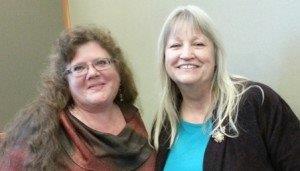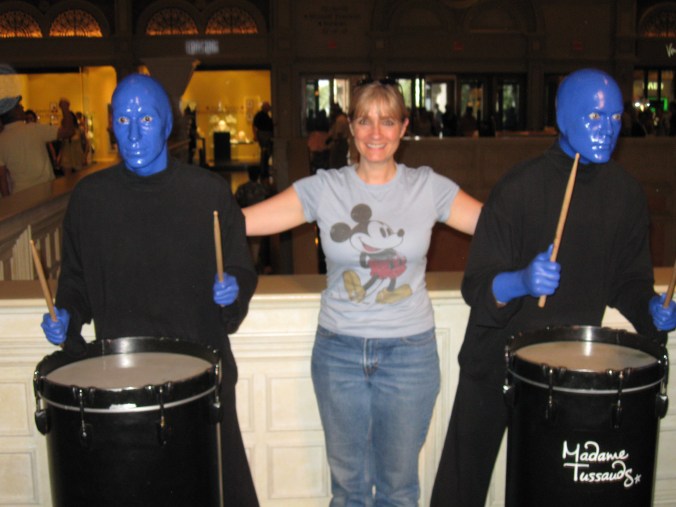A while back I found Jaime Haney’s blog, which led me to her website, Jaime Haney Fine Art (www.jaimehaney.com) The first piece I saw was the one below. I was caught by the vibrant color and sense of motion, and reminded of another artist, Emily Carr, who also had that sense of motion. Painting fascinates me because I have no sense of color, but also because of how the artist can take something stationary, as in a canvas, and make it alive.

I then watched Jaime take on the challenge of creating one painting a day for thirty days. I followed her progress, and then asked if I could interview her. Jaime graciously agreed, and what follows is that interview. I hope you enjoy seeing her perspective on the creation of art.
And I hope you take a few minutes to visit her website and look at her work.
Can you give me a little of your background and how you came to paint?
I’ve always loved to draw and I painted as a child like all of us but not once I got out of high school. Drawing was always easy no matter where you are, just grab a pencil and paper and start. So I always drew. I drew on everything.
In college, I was learning to be a graphic designer and that didn’t require any painting or painting classes, so I never was taught the “right” way to paint. It wasn’t until a few years after I had my son and had quit my job as an art director at an ad agency that I decided to give painting a try.
It started out first as painting in sketch books. My first official painting, which was on a piece of wood, was of an owl and painted with the intention of being a birthday gift for a friend.
I enjoyed it so much and discovered I had somewhat of a natural ability to do it that I decided to try and teach myself to paint the “right” way through books from my local library.
When you look at the world around you, what triggers the desire to recreate what you see?
The desire to recreate beauty is fueled by an unknown reason, it just seems to be in me. The same as recreating nature in my gardens… an uncontrollable urge to dig in the dirt and make something grow and thrive.
Regarding my subjects in painting or illustrating my world and thoughts, they are triggered by the sheer beauty or mystery of nature. That something may be a simple curve of a leaf, colors of a velvety petal or the many arms and fingers of the trees. Sometimes it’s the mystery of a dream or even just thoughts.

One painting a day…
You use acrylics in your work. What made you choose that medium and why do you prefer that over other mediums?
I like acrylics because they dry so fast and are easy to manipulate. I can use acrylics as watercolors if I so choose just by watering them down or using an additive (mediums). I also have the choice of making them more oil like with the addition of mediums and glazes. The ranges and uses of acrylics are many. The fact that they clean up easily is a bonus.
We talked before about a technique called ‘under painting’. It sounds like this is similar to plotting out a novel, where you create the scaffolding. Can you talk a bit more about under painting? Is it similar to sketching out something ahead of time, or is it more like laying down the basic color patterns you want?
Yes, underpainting is more like laying down the base of the painting for which I’ll build up with layers. The first base or underpainting may just be blocking in simple shapes of what I’m painting with a color that makes sense to what will be going over it later.
Sketching is generally done before the underpainting is blocked in. Sketching is used to layout my composition of the painting. Sketching isn’t necessarily done with pencils or charcoal. A painting can be sketched using paint as well.
An elderly friend of mine who painted for many years, no longer does so. When I asked her why she stopped, she told me she no longer felt the need to capture and own the life around her. She felt painting was a form of possessiveness for her, rather than recreating something beautiful for others to enjoy. What do you think about this in relationship to your paintings?
Well I think everyone has their own reason for painting and mine seems to change with time and the project I’m working on. Sometimes, it is simply to create beauty and/or mystery for myself to enjoy as well as others. Sometimes, it is a personal challenge to see if I can do it.
Others it’s almost an out-of-body experience. I know I’m painting, I feel the brush in my hand and the creaminess of the paint leave my brush and transfer to the canvas but I feel like I’m being directed by something else. Like the painting is painting itself. Time escapes, and I find it finished and wonder how I did such a thing.
I consider this a gift. I feel like not using my gift and sharing it with the world would be a mistake.
I love the paintings, and writing, of Emily Carr, a Canadian artist from the early 1900s. She said writing for her was peeling a sentence back to its bare essence and she felt that overlapped into painting. Do you think something similar must happen in order to recreate on canvas what your eye sees?
No, I believe anyone can create what they see with their eyes as it is a technical skill. However to touch someone, to convey your true meaning and to have it sink into the painting with feeling and soul requires truth with oneself and to let the process work (that and a bit of luck). To let go, let the painting evolve into what it wants to.
That doesn’t mean the viewer will know that truth. I’m of the belief that everyone will receive the work how they need to receive it. It’s not my job to make you feel a specific feeling with my work, it’s my job to just create it. to let it flow from me… It’s your job to take it in and discover what the painting is saying to you. I believe it’s different for everyone.

What do you hope people see when they look at your painting? Or in other words, what do you want your paintings to say?
Like I mentioned before, I really have no control of what people feel or see when viewing my paintings. That said, I do hope my paintings move them to a memory or thought that is significant to them. That the work evokes a smile or inspires wonder. I love to hear what people think of my paintings as far as meaning before I tell them what I was thinking as I painted it.
What do you think makes the difference between looking at a painting and looking at a photograph?
I think both can transport the viewer to another place. Both can invoke memories, good and bad. There is something about a photograph that for me is more telling in what it wants to convey. Maybe a flatness due to the camera being a machine and not the hand of a human. Perfection, again because of machine vs. human excluding distortion. I don’t really compare them, they’re so different and I feel both are equally an art outlet.
When you paint, are you aware of the emotional reaction you are trying to pull from the person who will eventually see the painting? Or is it more that you paint your own interpretation into the piece, and viewers then react to your relationship with the piece?
Hmmm… this is a good question. I don’t know the answer. I don’t think I’m aware of creating any emotional reaction into the piece. If that were possible, I probably would be doing it as much as possible! I feel like I keep answering the same way, but I truly feel the viewer consumes the work as it needs to be consumed at the time. They read into the work their own truths and those truths may be different at different times.
Is there one question you wish people would ask you about painting? And how would you answer it?
Well this is a hard one to answer because I can’t really think of anything that I wish they would ask. Technical questions are easy to answer, the harder ones are why did you paint this?
I don’t have a “main stream” style. I’ve often felt like I’m an outsider and I’ve never really fit in to anything (even artist). I don’t paint subjects or objects with the intention of “I think will sell”. So a lot of times my strange ones don’t sell. Occasionally, I don’t want to explain the real reason why I paint something as it feels very personal to me.
After saying that though, I do like it when people will ask “what’s the story with that one?” because when they say story, I feel the permission to embellish and add my thoughts of what I think the painting was telling me at the time. Because when you tell the average viewer the painting told me to… they kind of look at you differently or smile and walk away. But when I tell them the story of the painting they are more interested it seems. Really though, are they very different? I’m not entirely sure.
I’d like to thank Jaime for taking the time to answer questions, and to do so in such a patient and thoughtful manner. I love seeing the creative process in all its many forms.









